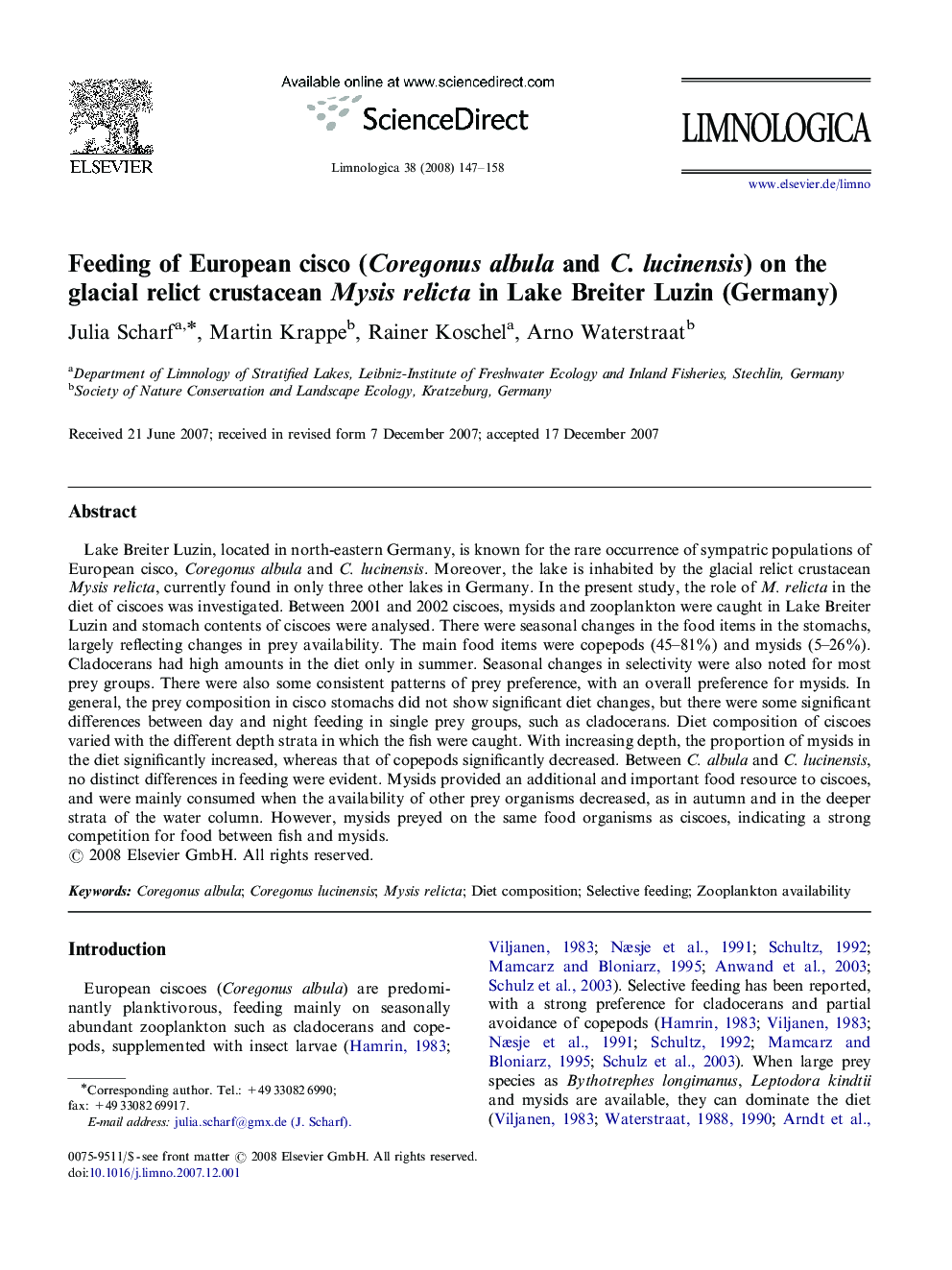| Article ID | Journal | Published Year | Pages | File Type |
|---|---|---|---|---|
| 4400716 | Limnologica - Ecology and Management of Inland Waters | 2008 | 12 Pages |
Abstract
Lake Breiter Luzin, located in north-eastern Germany, is known for the rare occurrence of sympatric populations of European cisco, Coregonus albula and C. lucinensis. Moreover, the lake is inhabited by the glacial relict crustacean Mysis relicta, currently found in only three other lakes in Germany. In the present study, the role of M. relicta in the diet of ciscoes was investigated. Between 2001 and 2002 ciscoes, mysids and zooplankton were caught in Lake Breiter Luzin and stomach contents of ciscoes were analysed. There were seasonal changes in the food items in the stomachs, largely reflecting changes in prey availability. The main food items were copepods (45-81%) and mysids (5-26%). Cladocerans had high amounts in the diet only in summer. Seasonal changes in selectivity were also noted for most prey groups. There were also some consistent patterns of prey preference, with an overall preference for mysids. In general, the prey composition in cisco stomachs did not show significant diet changes, but there were some significant differences between day and night feeding in single prey groups, such as cladocerans. Diet composition of ciscoes varied with the different depth strata in which the fish were caught. With increasing depth, the proportion of mysids in the diet significantly increased, whereas that of copepods significantly decreased. Between C. albula and C. lucinensis, no distinct differences in feeding were evident. Mysids provided an additional and important food resource to ciscoes, and were mainly consumed when the availability of other prey organisms decreased, as in autumn and in the deeper strata of the water column. However, mysids preyed on the same food organisms as ciscoes, indicating a strong competition for food between fish and mysids.
Related Topics
Life Sciences
Agricultural and Biological Sciences
Aquatic Science
Authors
Julia Scharf, Martin Krappe, Rainer Koschel, Arno Waterstraat,
